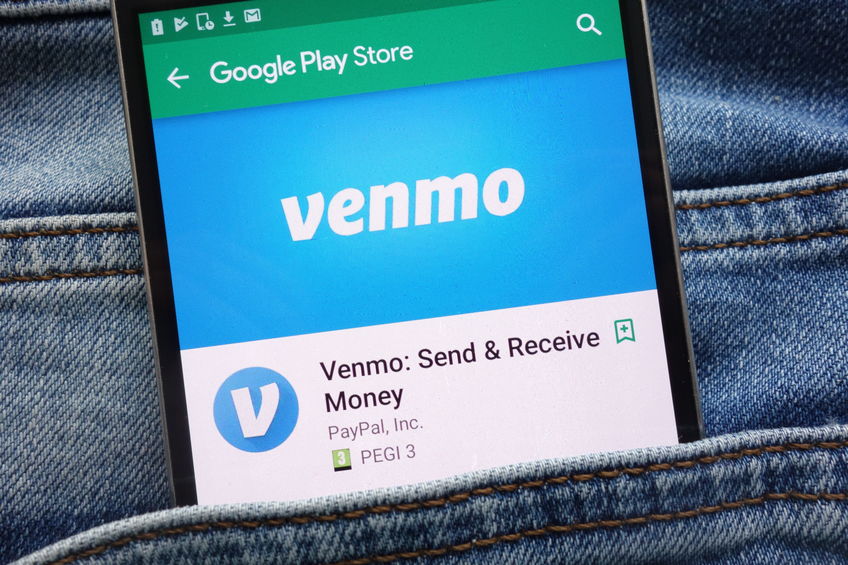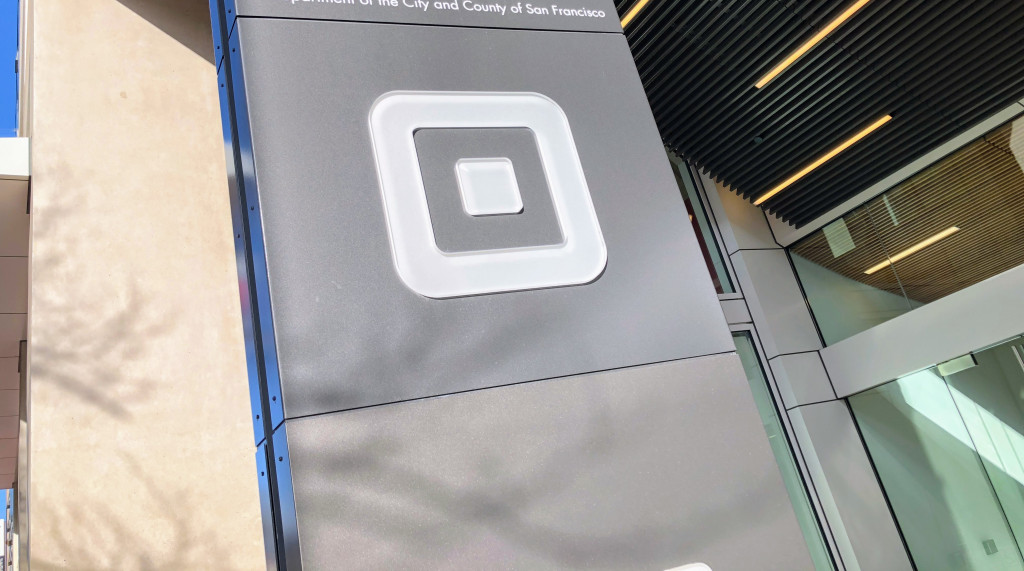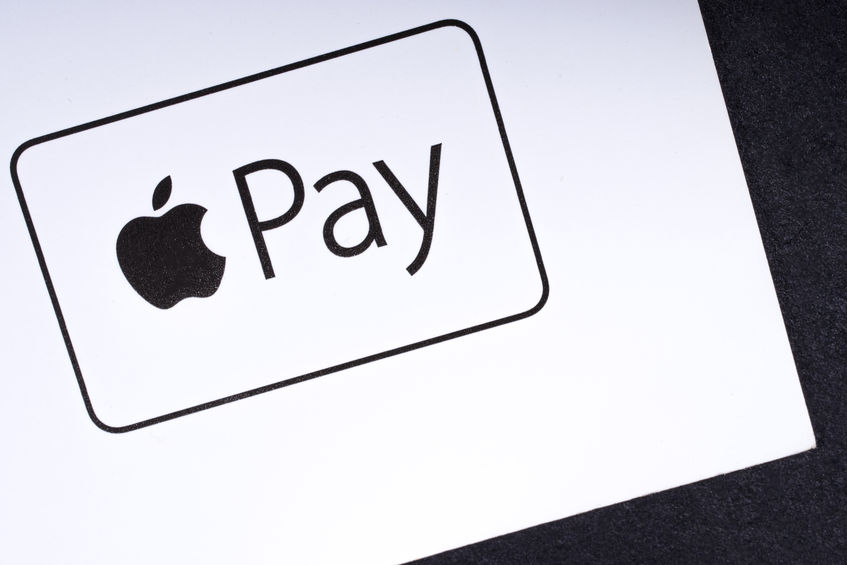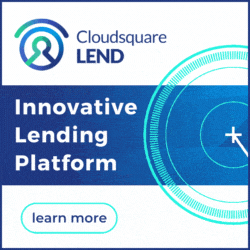payments
Apple’s Credit Card Looms Despite No Clear Launch Date
July 14, 2019 “A new kind of credit card. Created by Apple, not a bank.”
“A new kind of credit card. Created by Apple, not a bank.”
Now plastered across Apple’s website, these words signal the company’s next advancement into finance with Apple Card, the new credit card service it is launching later this summer. And they’re only half true.
While it is a novel take on credit cards, it’s not entirely free of banking’s influence, as Goldman Sachs has partnered with Apple for it. According to Margaret Keane, CEO of Synchrony Financial, the largest provider of store credit cards, there “were a lot of us” bidding for the partnership with Apple, “us” being banks and card providers, but Goldman came out on top.
The spoils of war being won in this case are a 2023 earnings-per-share gain of 2% by 2023 for Goldman, as well as the responsibility of managing all card payment disputes. The latter of which being an anomaly amongst Apple services, as the company has a history of overseeing all aspects of the customer experience.
What Apple stands to gain in comparison is a 1% gain by 2023. Being below the industry average, neither of these forecasts are something to be excited about. But these figures aren’t surprising, with the card offering no fees and low interest rates it appears as if Apple Card will be launched with the hope of staking some of the market share rather than seeing profits soar.
Offering financial statements and analysis via an app, as well as being available in two forms, a digital card in Apple Wallet and a titanium card that features no numbers on it, front or back, Apple Card bares a striking similarity to the recent trend of app-based banking witnessed in Europe, with the likes of N26 and Revolut booming in popularity in previous years.
Where Apple differs from these companies is that it specializes in credit, thus it offers a range of features unique to both the format and their position as a near-omnipresent tech giant. Auto-fill integration with Safari; cash back on each purchase made with Apple Card, being 3% on any Apple products purchased, 2% on non-Apple purchases, and 1% when using your Apple Card at a vendor who doesn’t accept Apple Pay; an APR range of 13.24-24.24; and options for when you’d prefer to pay your interest, complete with clear payment schedules, are all being promised. As well as this, Apple is hoping to combat the common inconvenience of cryptic merchant names that pop up in statements. Jennifer Bailey, Vice President of Apple Pay, explained that “With Apple Card we use machine learning and Apple Maps to transform this mess into names and locations that you’ll recognize.”
All of this was outlined back in March, when Tim Cook took to the stage in Cupertino, California to claim that Apple is making the “most significant change” to credit cards in five decades. But months have passed since this assertion, and as the vague release date of “summer” offers no specificity to Apple fans who are holding their breath, those who are curious about Apple Card are left to be satisfied by the infrequent reviews that slip out from Apple employees who are enrolled in the program’s beta.
We’ll find out if the wait will be worth it sometime soon, probably, but until then there’s always the 1986 Apple credit card that can be ogled at until Apple Card is released to the public.
Affirm Partners with Walmart for Payments
February 28, 2019 Walmart customers can now pay for items using credit from Affirm, the online consumer lender announced yesterday. Walmart customers can find out how much they qualify for online and then make online or in-store purchases with in three, six or twelve monthly installments. A credit decision is made in real time and does not affect the customer’s credit score, according to Affirm.
Walmart customers can now pay for items using credit from Affirm, the online consumer lender announced yesterday. Walmart customers can find out how much they qualify for online and then make online or in-store purchases with in three, six or twelve monthly installments. A credit decision is made in real time and does not affect the customer’s credit score, according to Affirm.
“Walmart serves millions and has become a leader in the retail landscape with its commitment to help shoppers ‘save money and live better,’ which closely mirrors our own mission to ‘improve lives’ with our products,” said Max Levchin, founder and CEO at Affirm, as well as a founder of PayPal. “I’m looking forward to introducing Walmart customers to a modern and innovative way to buy the things they need.”
Affirm is now available as a payment option on Walmart purchases ranging from $150 to $2,000. This is not Walmart’s first foray into financing. In fact, in July of last year, Walmart entered into an exclusive partnership with Capital One to issue a Walmart credit card. But Elizabeth Allin, Vice President of Communications at Affirm, said that this partnership is the first point-of-sale loan product partnership for Walmart.
“They’ve really embraced e-commerce and the evolution of digital and mobile,” Allin said of Walmart, which has been the biggest retailer in the world for years.
Now 57 years old, the retail giant is pursuing partnerships with financial organizations to facilitate access to customer credit. But back in 2006, Walmart set its sights on bringing these lending operations in house, by becoming bank. Using a controversial statute, it attempted to get a charter to become an ILC bank. Met with strong opposition from banks and other opponents, Walmart backed down.
PayPal Has a Lot of Merchants and Venmo Is Adding a Boost
February 1, 2019 More than 21 million merchants accept PayPal to take advantage of the 246 million consumers who use it. That’s a lot of merchants to offer value-added products like PayPal Working Capital and invoicing services. But then there’s Venmo, a fast growing digital wallet that PayPal also owns that processed $19 billion in payment volume last quarter and is projected to handle $100 billion worth across all of 2019.
More than 21 million merchants accept PayPal to take advantage of the 246 million consumers who use it. That’s a lot of merchants to offer value-added products like PayPal Working Capital and invoicing services. But then there’s Venmo, a fast growing digital wallet that PayPal also owns that processed $19 billion in payment volume last quarter and is projected to handle $100 billion worth across all of 2019.
Although Venmo itself is not a profitable business yet, it has gone from generating almost zero revenue to hitting a $200 million revenue run rate by the end of 2018. And it’s bringing in new users thanks to a network effect. When a network effect is present, the value of a product or service increases according to the number of others using it.
PayPal CEO Dan Schulman said on the company’s earnings call on Thursday that PayPal and Venmo will probably attract another 33 million new active users in 2019, thanks in part to the network effect and “the virality of Venmo.”
Meanwhile, PayPal COO Bill Ready said on the same call that merchants tend to come to them directly for services like working capital loans rather than to online marketplaces like Shopify or Wix because oftentimes merchants sell across multiple marketplaces. “PayPal becomes the aggregation point for them to connect to each of those platforms,” he said.
Ingo Money QuickConnect Allows for Push-to-Card Payments
December 14, 2018
Yesterday, Ingo Money announced the launch of Ingo Money QuickConnect, a new solution that allows companies that issue payments – including loans – to disperse funds directly to a merchant’s debit card. Ingo Money has partnered with Visa Direct to facilitate these direct payments.
This is the official announcement for a product that has been in the works for over a year. OnDeck announced its partnership with Ingo Money last October, but didn’t start using it until it was ready earlier this year, according to an OnDeck spokesperson. So far, OnDeck only uses the Ingo Money QuickConnect service to provide same-day disbursements to their line of credit customers. The spokesperson said they have seen great demand among customers for receiving money instantly.
“Ingo Money QuickConnect allowed us to get to market faster than we ever believed possible and with minimal time, cost and hassle,” said Sam Verrill, OnDeck’s Director of Product Management. “The solution has thoughtfully solved for all the pain points and hurdles to deploying a new payment solution, making it quick and easy to begin delighting customers and cutting costs with digital real time disbursements.”
Chief Product Officer for Ingo Money Lisa McFarland told deBanked that OnDeck was their first client in the lending category, and that they now have a few other lending clients, but declined to mentioned which.
“What’s exciting about Ingo Money QuickConnect is that customers can access money the minute they need it,” McFarland said. “At night, on weekends and holidays.”
The Ingo Money QuickConnect solution is also being used in other ways, including insurance companies paying claims and child support payments where the government is an intermediary. Use in payment of airlines vouchers to customers and by the IRS to people who are owed money are also being considered, according to McFarland.
“We’ve heard time and again from customers that they need to deploy a push-to-card payment solution but are intimidated by the time and effort required,” said Ingo Money CEO Drew Edwards. “Ingo Money QuickConnect removes the burden and allows a company to almost immediately begin offering real-time payments through Visa Direct, while retaining the ability to easily expand the solution later to include payments to online wallets like PayPal and Amazon or even cash out Moneygram locations.”
Square Capital Loaned $405 Million in Q3
November 8, 2018 Square Capital originated more than 62,000 business loans for a total of $405M in Q3, up from $390M in the previous quarter, according to the company’s latest earnings report.
Square Capital originated more than 62,000 business loans for a total of $405M in Q3, up from $390M in the previous quarter, according to the company’s latest earnings report.
By contrast, OnDeck, a Square Capital competitor, reported loan originations of $648M for the quarter. Both companies find themselves facing new competition from a growing field of tech players like Shopify (who last quarter originated $76.4M in merchant cash advances).
Thanks to an early investment in Eventbrite, the online events company that went public in September, Square turned its regularly scheduled quarterly losses into a profit in Q3. On the company’s earnings call, Square CFO Sarah Friar said that the company would have had a $17 million loss if it weren’t for a windfall related to the IPO of Eventbrite.
The big news that Square CEO Jack Dorsey had to share on the earnings call was the introduction of Square Terminal, a portable, all-in-one payment device that prints receipts.
“People don’t want to use their personal device to accept payments,” Dorsey said of many small business owners.
Dorsey said that this device is essentially meant to replace “those black rectangular boxes,” referring to the ubiquitous credit card processing machines which he described as “dinosaurs.”
Another theme of the earnings call was Friar’s departure from Square. Friar announced in October that she will be taking the job of CEO at Nextdoor, a social network. Dorsey thanked Friar for her contribution to Square and in a tweet expressed sadness that she was leaving. He said that a search to replace Friar is currently underway.
Dorsey also expressed pleasure with the continued success of Square’s Cash app, a peer to peer payments app that he said allows the “underserved and unbanked” to transfer money.
“I’m excited [about] what we can build on top of it,” Dorsey said.
Stripe Becomes a Digital Credit Card Issuer
August 8, 2018 Stripe has recently started offering a new API, or programming feature, that allows its merchants to offer physical or virtual credit cards to their employees. The product, called “Issuing,” is still being tested and is currently by invitation only, although it does appear as an offering on the company’s website. Merchants can request an invitation.
Stripe has recently started offering a new API, or programming feature, that allows its merchants to offer physical or virtual credit cards to their employees. The product, called “Issuing,” is still being tested and is currently by invitation only, although it does appear as an offering on the company’s website. Merchants can request an invitation.
According to the website, creating a card is an easy three step process that involves providing identifying information about the cardholder, then literally creating the card (physical or virtual) and finally, activating it. Physical cards can be shipped either to the merchant or the cardholder, while virtual cards are available to use immediately.
The merchant can manage cards by creating restrictions, like maximum purchase amounts, charges can be disputed, and physical cards can have customizable designs, just like cards issued from a bank. However, Stripe is not a bank. Stripe did not respond in time for this story, but it is likely that the company has partnerships with companies that can underwrite and offer lines of credit to their customers. On the Stripe website, it indicates three of its financing partners: Funding Circle, Iwoca and Clearbanc.
Stripe is a payment platform that facilitates online payments. The company takes 2.9% plus 30 cents of every successful charge a merchant makes. Stripe customers are small business owners, but also include giant companies like Facebook and Target. Founded in 2011 by brothers John and Patrick Collison, Stripe is headquartered in San Francisco. It also has offices in Dublin, London, Paris, Singapore and Tokyo, and it employs more than 1,100 people.
Apple Pay is Closing in On PayPal
August 2, 2018 According to Apple’s quarterly earnings that were released on Tuesday, Apple Pay transactions tripled from last year at the same time to more than 1 billion transactions. CEO Tim Cook said during Apple’s recent earnings call that this is more than Square did in the last quarter and exceeded the number of mobile transactions via PayPal. PayPal, the industry leader, reported 2.3 billion transactions over the last quarter. This still puts them well ahead of Apple Pay, by 1.3 billion; but not as far ahead as last year, when PayPal led by almost 1.8 billion.
According to Apple’s quarterly earnings that were released on Tuesday, Apple Pay transactions tripled from last year at the same time to more than 1 billion transactions. CEO Tim Cook said during Apple’s recent earnings call that this is more than Square did in the last quarter and exceeded the number of mobile transactions via PayPal. PayPal, the industry leader, reported 2.3 billion transactions over the last quarter. This still puts them well ahead of Apple Pay, by 1.3 billion; but not as far ahead as last year, when PayPal led by almost 1.8 billion.
Apple also reported today that it hit a $1 trillion market cap. The success of Apple Pay is further confirmation that giant technology companies are also becoming fintech companies. Google has the Google Pay service and Facebook’s WhatsApp is rolling out a payment feature. To keep up with fintechs, last year, a group of the largest American banks (including Bank of America, Wells Fargo and Capital One) launched Zelle, a peer to peer payment service. So far, Zelle has proven to be a good idea.
According to eMarketer, a research firm, Zelle is expected to surpass Venmo this year in terms of users. With these expectations, Zelle will grow by more than 73% in the US, to 27.4 million users by the end of the year, outpacing Venmo (owned by PayPal), which should have 22.9 million users and Square Cash, which should have 9.5 million.
PayPal’s Actions Convey Continued Expansion of Lending Business
July 27, 2018PayPal announced its Q2 2018 earnings yesterday. Notably, total payment volume grew 27%, which is 1% higher than Q2 of last year. And the popular payment app Venmo, which is owned by PayPal, grew 78%, only slightly less than its growth of 80% from the last quarter. As expected by Wall Street analysts, revenue growth lagged total volume growth as Venmo is still largely unmonetized.
PayPal demonstrated continued commitment to its online lending division, PayPal Working Capital, when last month it made a significant investment in LendUp, a startup that offers loans to subprime consumers. This follows PayPal’s September 2017 acquisition of Swift Financial, for $183 million.
In yesterday’s Q2 earnings conference call, PayPal CEO Dan Schulman spoke about the company’s consumer lending division, PayPal Credit. He said that the company has strengthened its partnership with eBay by signing an agreement to extend its long-standing consumer financing offer to eBay’s marketplace.
“With this agreement,” Schulman said on the conference call, “eBay will continue to accept and promote PayPal Credit through 2025.”
As PayPal continues to grow both PayPal Credit and PayPal Working Capital, it does have the advantage of strong name recognition. After all, it started back in 1998 as one of the first major websites on the internet. To emphasize this, during the conference call, Schulman cited a recent ComScore study that reported that 52% of mobile consumers said they made more online purchases because PayPal was offered. And one-third of all PayPal mobile customers surveyed said they will abandon a purchase if PayPal is not offered as a checkout option.





























